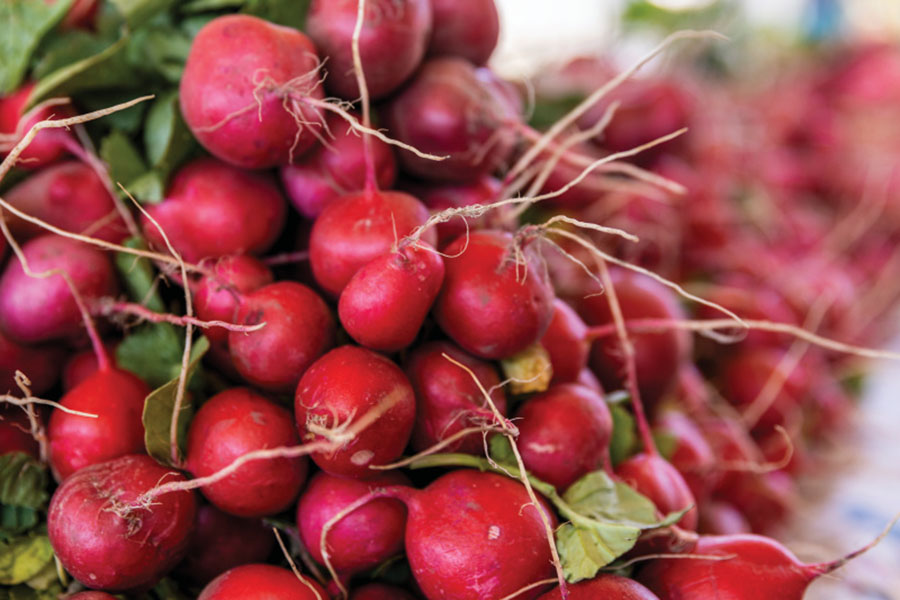Home > Wisconsin > Wisconsin Agritourism > Wisconsin Farmers Adapt Amid High Demand for Farm Products
Wisconsin Farmers Adapt Amid High Demand for Farm Products
In partnership with: Wisconsin Department of Agriculture, Trade and Consumer Protection.

When the pandemic hit, local food producers across Wisconsin pivoted to online sales, curbside pickup and home deliveries. Open-air farmers markets also increased physical distancing and added measures such as mask wearing and hand sanitizer to deliver wholesome food in a safe manner.
“What we realized during COVID is that Wisconsin has strong food systems,” says April Yancer, the Farm to School and Institution and Wisconsin Foods Program Specialist for the Wisconsin Department of Agriculture, Trade and Consumer Protection (DATCP). “It proved that our local food systems are nimble and resilient and adapt quite well in emergency situations.”

Direct farm-to-consumer sales take many forms in Wisconsin, from online ordering and curbside deliveries to farmers markets and Community Supported Agriculture (CSA) programs. At 300 farmers markets across the state, farmers sell fruits, vegetables, meats, cheeses, baked goods and more. Most markets continued to operate during the pandemic, supplying personal protective equipment, honoring distance requirements, setting attendance limits and offering curbside pickups. Some high-attendance urban markets decentralized with smaller groups of vendors and set up mini-markets within city neighborhoods.
“Markets flexed really well,” says Kristin Krokowski, director of the Wisconsin Farmers Market Association. “They got the recommendations. They evaluated their situation and the guidance that we put out.” Still, Krokowski says the pandemic had mixed effects on overall sales: “Some markets and many CSAs saw record sales. Other markets struggled.”

Closed Doors, Open Windows
When the pandemic first hit, some of Paul Dietmann’s clients saw their markets vanish overnight. Dietmann co-leads the Emerging Markets Loan Program at Compeer Financial, where he provides lending opportunities for small farmers who sell directly to consumers and vendors, such as restaurants.
“They ended up retooling their marketing methods and figured out ways to get products to consumers,” says Dietmann, who is also a former deputy secretary and Wisconsin Farm Center Director at DATCP. “It changed the way consumers looked for products as well.”
See more: How Wisconsin Farmers’ Markets Bring Success to Local Communities
Dietmann saw many examples of this shift. A client who usually sold meat to Chicago restaurants started selling directly to local residents through an online store and curbside delivery service. A cidery’s tasting room shut down, yet sales flourished for grocery boxes containing raw ingredients for items typically on the menu. A fresh-cut flower farm lost its wedding business but gained customers wanting flowers for cheerful, stay-at-home greetings.

Across the board, sales increased 50% to 100% in 2020 for most of Dietmann’s local food producer clients.
“It was amazing,” he said. “I was really worried because my farmers are so reliant on selling directly to consumers. By and large, they came through in really good shape.”
See more: Agritourism Is Booming Despite Pandemic
Lasting Changes
The pandemic prompted a widespread shift toward more frequent use of technology and remote communications, which worked well for some but not all. Ultimately, consumer behavior and expectations will drive the way people access local food moving forward, and farmers will continue to adjust accordingly.
“Farmers have weathered something tremendous here and deserve a ton of credit,” Krokowski says.



